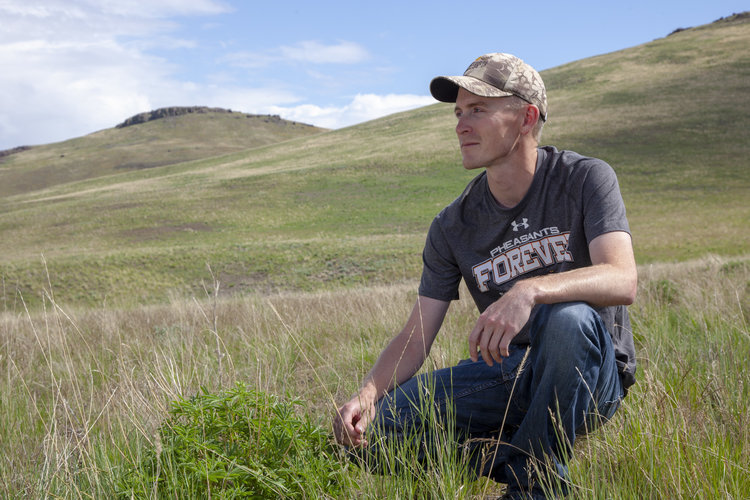Five New Members on the Sage Capacity Team!
Partnering to Conserve Sagebrush Rangelands is investing in people in priority landscapes to develop lasting conservation partnerships in the form of community-based conservation capacity. We call the folks filling these important roles the Sage Capacity Team. These individuals are helping to coordinate across public and private boundaries, break through bottlenecks and challenges, track projects and success, and facilitate forums that bring partners together in sagebrush country.
Through collaboration with the Bureau of Land Management and many other partners, this team now consists of 15 partner positions! Their work entails addressing conifer encroachment, restoring wet meadow habitats, reducing the risk of catastrophic wildfire and cycle of annual invasive grasses, facilitating outcome-based grazing, and conserving big game migratory corridors, among other sagebrush-habitat focused areas of work. You can learn all about these people on our Community-based Conservation page.
Below we are highlighting five of our newest Sage Capacity Team members that stepped into their roles in 2020. Each has answered the following two questions: Why is collaborative conservation important to you? And, in your new role, what are you most looking forward to working on?
Please join us in welcoming them to the partnership. We are thrilled to have them aboard!
Kaitlyn Yoder: Arizona Strip BLM District Wildlife Ecologist - Habitat Planning and Implementation Specialist (St. George, Utah)
Why is collaborative conservation important to you?
When I first began my education and career in the conservation and natural resource field, I was very focused on species-specific conservation. As I grew, I realized species centric conservation while beneficial is nothing without considering the broader scope and interaction with other species and the ecosystem.
In your new role, what are you most looking forward to working on?
I am looking forward to the larger canvas. Landscape ecology and landscape level management have become a new fascination of mine. The level of complexity and the potential for creativity, while intimidating at times, is inspiring and exciting to me. There is so much potential when you take a multi-scaled approach to management and conservation!
Janyne Little: Buffalo-Skedaddle Sage Grouse Working Group Project Coordinator (Susanville, California)
Why is collaborative conservation important to you?
Collaborative conservation is important to me because it allows all parties to be heard and often generates longer lasting solutions than if everyone was working separately.
In your new role, what are you most looking forward to working on?
I am most looking forward to implementing projects at a watershed scale and getting work done on the ground.
Jason LeVan: Wyoming’s Sage Grouse Initiative Range and Wildlife Conservationist (Lander, Wyoming)
Why is collaborative conservation important to you?
I feel collaboration among various individuals, groups, organizations, and agencies is key to achieve conservation successes on the landscape. Collaborative conservation allows a diverse group of stakeholders to share various perspectives and knowledge so informed management decisions can be made.
In your new role, what are you most looking forward to working on?
I’m excited to work directly with private landowners and agricultural producers to help them achieve their conservation goals.
Kellie Dobrescu: Bristlecone Range and Wildlife Biologist-Project Implementation Coordinator (Ely, Nevada)
Why is collaborative conservation important to you?
Collaborative conservation gets the work done. I like that it’s a quicker turnaround when working with partners who all have the same goal in mind.
In your new role, what are you most looking forward to working on?
I’m excited to dive into aspen restoration. I’m up for the challenge in managing our aspen communities in conjunction with shrubland habitats.
Connor White: Bruneau-Owyhee Sage-Grouse Habitat Project Outreach Coordinator (Boise, Idaho)
Why is collaborative conservation important to you?
We are facing a century of very limited action on pervasive rangeland problems. Our conservation work must be cross boundary and collaborative in nature, or we will not fully address these issues.
In your new role, what are you most looking forward to working on?
I’m excited to see how jackpot burning after cutting fits into our juniper removal process.




